TESOL Board Connect: Learning Through Service
by Elisabeth L. Chan
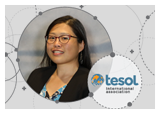 I’m originally from Memphis, Tennessee, USA where
my great-grandfather moved after immigrating to North Little Rock, Arkansas. I
come from a multigenerational immigrant family. My great grandfathers,
grandparents, and father immigrated to the United States over the years. I
identify as a fourth/second-generation Chinese American from the U.S. South.
Unfortunately for me, it means I grew up somewhat detached from my cultural and
linguistic heritages. I didn’t understand or recognize the differences of high-
and low-context cultures or the differences of collectivist versus
individualistic perspectives clashing in my house. I didn’t recognize my father
as a bilingual, bicultural person and how that shaped the way he communicated
with his third-generation Chinese American wife and four very American
children who were monolingual English speakers.
I’m originally from Memphis, Tennessee, USA where
my great-grandfather moved after immigrating to North Little Rock, Arkansas. I
come from a multigenerational immigrant family. My great grandfathers,
grandparents, and father immigrated to the United States over the years. I
identify as a fourth/second-generation Chinese American from the U.S. South.
Unfortunately for me, it means I grew up somewhat detached from my cultural and
linguistic heritages. I didn’t understand or recognize the differences of high-
and low-context cultures or the differences of collectivist versus
individualistic perspectives clashing in my house. I didn’t recognize my father
as a bilingual, bicultural person and how that shaped the way he communicated
with his third-generation Chinese American wife and four very American
children who were monolingual English speakers.
These experiences and realizations have shaped the
way I approach my teaching, research, and professional service. I can look back
and see the lack of culturally responsive or culturally sustaining pedagogy in
my own experiences with schooling as a young learner. This is part of the
reason I am passionate about examining language education through critical,
intersectional, and relational lenses.
The year after I completed my master’s degree, I
joined TESOL International Association as a young professional. A year later, I
volunteered to serve on the Diversity Committee. I learned a lot about the big
picture of the association, expanded my network, and benefited from informal
peer mentoring. Because of this experience, I always encourage other members to
volunteer. You don’t have to wait for years before you volunteer.
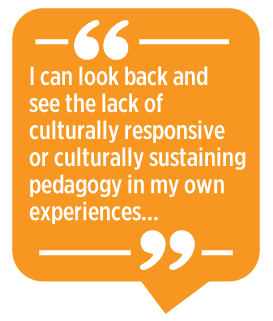 Becoming more involved in interest sections (IS)
was really the best way that I made the most of my membership. I was elected
chair of the Social
Responsibility IS. I appreciate the flattened hierarchy of leadership
in this member community because I had incredible access to historical
knowledge and support from other Social Responsibility IS leaders, present and
past. Through this experience, I learned more about the big picture of the
association from a different perspective. I also strengthened my skills in
collaboration by working with several other member communities to facilitate
panel presentations.
Becoming more involved in interest sections (IS)
was really the best way that I made the most of my membership. I was elected
chair of the Social
Responsibility IS. I appreciate the flattened hierarchy of leadership
in this member community because I had incredible access to historical
knowledge and support from other Social Responsibility IS leaders, present and
past. Through this experience, I learned more about the big picture of the
association from a different perspective. I also strengthened my skills in
collaboration by working with several other member communities to facilitate
panel presentations.
When the Diversity & Inclusion Committee
was sunset, I met with members from across ISs, (then) forums, and committees
to create a TESOL Diversity Collaborative. It was an informal group working for
diversity through a critical lens, which eventually applied to become a forum
and then the TESOL
Diversity Collaborative Professional Learning Network (PLN). As I
started my volunteer work on the Diversity Committee, I remained
committed to working on equity issues. Volunteering to work within a PLN has
both similarities and differences to working in an IS or committee. Both are
great ways to make connections to like-minded professionals. Unlike ISs, PLNs
are not part of TESOL’s governance structure, but they tend to have more
diverse leadership structures than ISs.
One of the task forces that I worked on focused on
ISs. We found that the majority of participants in our member survey were not
part of an IS and/or didn’t know what an IS was. Based on our sample, it turned
out that the largest “member group” in the association was members who didn’t
have an IS. This experience has helped inform the way I think about belonging
and engagement within the association at different levels.
I later served as a member of the Nominating
Committee (NomCom). I think the NomCom is a little bit of a mystery to some
members. This is the committee that is primarily charged with encouraging
people to apply for leadership positions and vetting applicants to create the
annual ballot for the NomCom, board of directors, and president-elect. Because
of this, the NomCom has power to influence making changes at the top leadership
levels. Serving on this committee as a member and later as the chair and past
chair, I became more familiar with both the opportunities and challenges of
leadership at these levels. I especially learned better how the TESOL staff
work together with the executive director and the board.
I am still in the midst of my first year on the
board of directors and am open to learning and seeing where this journey is
going. To conclude, I hope you feel free to reach out to me and share a little
of your own journey. I spend a lot of time reflecting as part of my
professional practice and welcome your reflections, too. Maybe you have found
something in my experiences that stood out to you, made you feel a connection
to something, or left you pondering something new. I have a few short
acknowledgments and reflections for leadership.
-
For past leaders: Thank you for your dedication
and contributions to the field and the association. I know it’s currently
difficult to find recognition of members’ past service, but I hope that is
something we can work on as an association.
-
For current leaders: Actively seek out and
invite others to collaborate. Let me also personally thank and acknowledge you
and the time, consideration, and professionalism you bring to your
volunteerism.
-
For future leaders: If you’re interested in
volunteering, just try it. If you feel nervous about serving, don’t worry. You
can do it! You’ll find new connections and mentors along the way. A thanks in
advance to you for your service!
Elisabeth L. Chan has more than 15 years of experience as an English language educator. She currently teaches English as a second language at Northern Virginia Community College. She holds a PhD in multilingual multicultural education and interdisciplinary perspectives and social policy. She has presented, researched, and published on issues of social justice in education through a critical lens and challenging anti-Asian hate, where she draws upon her lived experiences as a second/fourth-generation Chinese American from the U.S. South.
TESOL Blogs
Interested in writing a blog for TESOL?
Read the submission guidelines and send us your post!
Check out some of the most recent TESOL Blogs:
|
Reading the Sun, Moon, and Stars: Intergenerational Literacy, by Spencer Salas

Happy October from the University of North Carolina at Charlotte! This month, my Dad’s turning 90 and for this blog post I’d like to share one of the stories he’s told us about growing up on the island of Guam during World War II. This one is about my Uncle Juan learning when to plant corn. It goes like this:
Just a few months before the outbreak of the War in the Pacific, my grandfather died, leaving behind his widow and eight children. Juan, 13, suddenly became the man of the family. With the help of neighbors, Juan cleared a small piece of land to plant the crops that they would count on to feed the nine of them. Read more. |
|
Affecting Language Policy: Start With Your Language Orientation, by Naashia Mohamed

Many people equate policy with law and politics—something that brings to mind lawmakers and politicians rather than educators. However, teachers are central to policy implementation in a number of ways:
- Classrooms can turn educational policy into action.
- Teachers are key actors who enact language policies in education.
- Teachers make decisions about which languages to use during instruction, which languages to encourage among learners, and which languages or varieties are not accepted in the classroom.
These decisions about language are shaped by teachers’ language orientations. Read more. |
|
Writing Activities to Make the Most of Being Back in the Classroom, by Betsy Gilliland
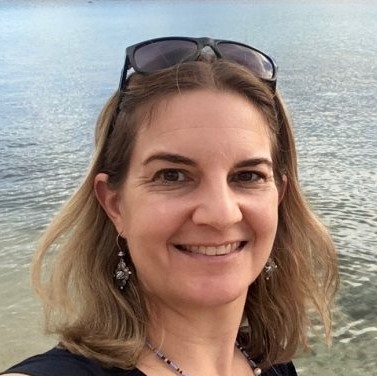
As a new academic year starts, I’m excited to be back to teaching in-person classes without the restrictions of social distancing. While the last 2 years have been fruitful in pushing me to think of how to engage my students over Zoom in creative and interactive ways, some of my favorite aspects of teaching are much more enjoyable when students are all in the same room and can move around freely.
Scholars have argued for the value of movement in the classroom, as it has been shown to increase focus and memory while also facilitating learning of new concepts. Even in a skill like writing that would seem to be more appropriate to sedentary, individual work, students can practice their skills through physical activity as well. In this post, I share some of my favorite movement-oriented activities for teaching second language writing. Many of these activities can be adapted for learners of different proficiency levels and for varying class sizes. Read more. |
TESOL Bookstore

Featured Resources from TESOL Press
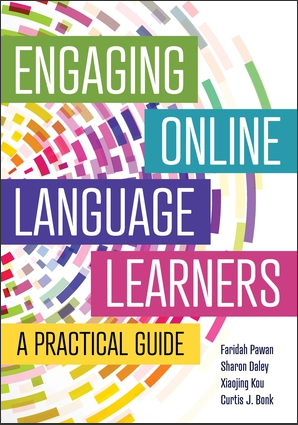 Engaging Online Language Learners: A Practical Guide
Engaging Online Language Learners: A Practical Guide
Faridah Pawan, Sharon Daley, Xiaojing Kou, and Curtis J. Bonk
While engaging and motivating students in the classroom has always been critical for student success, it is even more important and challenging in the online learning environment. This practical guide will provide English language educators with a number of strategies and ready-to-use activities to help them engage and motivate their students for improved learner outcomes. It also covers trends in online learning, engagement and motivation principles and competencies, as well as ways administrators can support teachers' professional development. As an additional resource, the book comes with a companion website. **This title also includes a companion website with online resources.
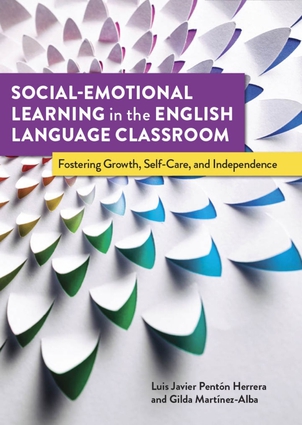 Social-Emotional Learning in the English Language Classroom: Fostering Growth, Self-Care, and Independence
Social-Emotional Learning in the English Language Classroom: Fostering Growth, Self-Care, and Independence
Gilda Martinez-Alba and Luis Javier Pentón Herrera
While SEL is becoming increasing critical for learners’ success, teachers often feel unprepared to incorporate or address it in their classrooms. This book serves as a practical, concise, and easy-to-follow reference that English language teachers in K-12 and adult education and English language teacher educators can use in their classrooms. It is one of the limited emerging SEL resources available that is tailored to the English language teaching field and contributes to filling the existing gap of SEL in English language education. Teachers will be equipped with the necessary knowledge and skills to practice self-care and be confident in implementing SEL in their learning spaces to support and benefit their learners.
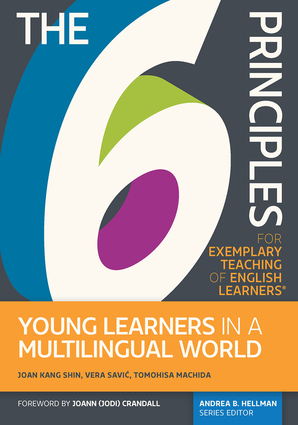 The 6 Principles for Exemplary Teaching of English Learners®: Young Learners in a Multilingual World
The 6 Principles for Exemplary Teaching of English Learners®: Young Learners in a Multilingual World
Joan Kang Shin, Vera Savic, and Tomohisa Machida
This book guides educators in teaching young learners (2- to 12-year-olds) in an English as a foreign language setting by using The 6 Principles for Exemplary Teaching of English Learners® as a framework. A core set of principles for the exemplary teaching and learning of English as a new language, The 6 Principles and their recommended practices are targets of teaching excellence that provide teachers with the knowledge to improve instruction and assessment. Instructional techniques are illustrated throughout the book with numerous classroom examples, case studies, checklists, and vignettes.